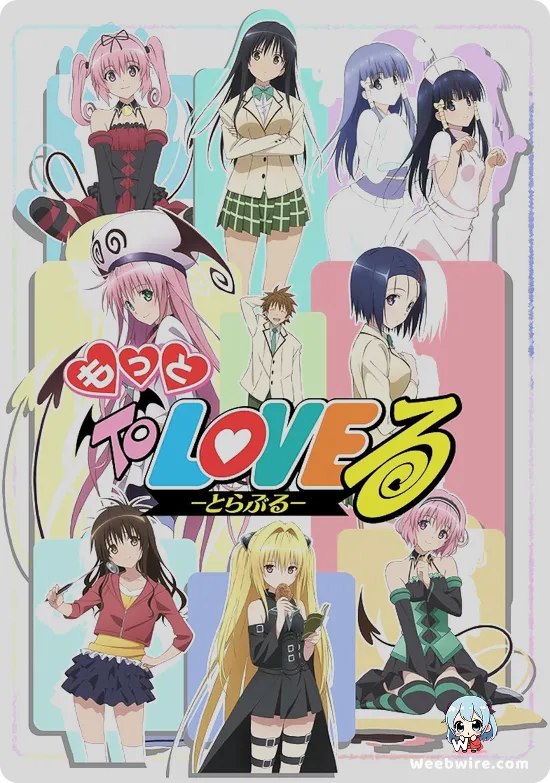

© Xebecwww.crunchyroll.com
Overview
Motto To Love Ru serves as the highly anticipated direct sequel, continuing the complex and often chaotic life of high school student Yuuki Rito, following the events established in the original series. The narrative is primarily driven by Rito's escalating romantic entanglement with Lala Satalin Deviluke, the runaway alien princess from the planet Deviluke. While Lala is determined to make Rito her husband, Rito struggles to reconcile his feelings, particularly due to his quiet affection for his long-time classmate, Haruna Sairenji. This installment significantly broadens the domestic chaos with the permanent arrival of Lala's younger twin sisters, Nana Astar Deviluke and Momo Belia Deviluke. These two siblings introduce entirely new dynamics; Nana, the animal lover, often clashes with Earth customs, while Momo, possessing a more calculating and manipulative personality, begins plotting to ensure Rito’s happiness—even if it means orchestrating a harem. Across its 12 episodes, the series intensely focuses on the ecchi and comedic elements, utilizing accidental nudity, absurd misunderstandings, and high-energy slapstick fueled by Lala's advanced, yet often malfunctioning, alien technology. Set against the backdrop of an otherwise ordinary Japanese high school, the anime blends mundane teenage life with intergalactic royalty, assassins, and advanced gadgets. The central thematic exploration revolves around the nature of romantic commitment, loyalty, and navigating overwhelming personal circumstances while maintaining a lighthearted and humorous tone.
Opinion
The production quality of Motto To Love Ru, handled by Studio Xebec, demonstrates a notable adherence to consistency and vibrancy, crucial for the rapid-fire comedic and ecchi sequences. The animation is fluid, especially during slapstick moments, and the character designs remain faithful to Kentaro Yabuki’s distinctive aesthetic, utilizing bright color palettes and effective shading to emphasize character reactions and fan service elements. Pacing is brisk, dedicating each of the 12 episodes to self-contained, yet progressively linked, comedic scenarios, which efficiently manages the large ensemble cast. The series successfully integrates the new characters, Nana and Momo, whose distinct motivations and personality traits immediately enhance the central romantic dynamic, moving beyond a simple love triangle into a more complex, albeit still comedic, arrangement. The voice acting ensemble is professional, with standout performances from Haruka Tomatsu (Lala) and Junko Minagawa (Rito), who expertly convey the necessary blend of sincerity and exasperation required by their roles. While the thematic depth primarily remains focused on lighthearted romance and acceptance of the bizarre, the execution avoids feeling purely gratuitous, grounding the chaos in Rito's genuine emotional confusion. The core criticism lies in the sheer volume of accidental ecchi scenarios, which sometimes overshadow genuine character progression, yet this is inherent to the genre expectation. Overall, it functions as a highly competent, technically sound continuation of the franchise.
Characters
Nana Astar Deviluke
Voice: Aya Endo
Haruna Sairenji
Voice: Yukari Tamura
Yuuki Rito
Voice: Junko Minagawa
Lala Satalin Deviluke
Voice: Haruka Tomatsu
Momo Belia Deviluke
Voice: Mamiko Noto
Saki Tenjōin
Voice: Mai Nakahara
Credits
Studio
Xebec
Cover Art
Official promotional art by Xebec marketing team
Publisher
Shueisha
Producers
Xebec, TBS





